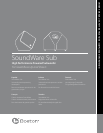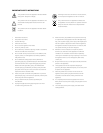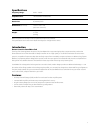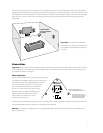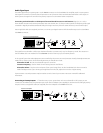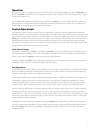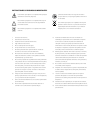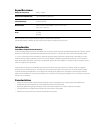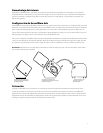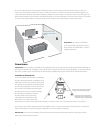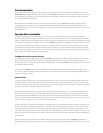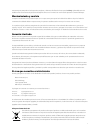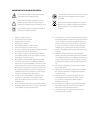7
Operation
After you have made all the system connections, turn on the power switch of the SoundWare Sub. Note the Status LED to the
left of the Crossover control. When the Sub is connected to a power outlet it will light red to indicate Standby status, or green
to indicate the amplier is on.
TheSoundWareSubamplierhasa“signalsensing”circuit.WhentheLine In(put) receives an audio signal the amplier turns
itself on. If there is no audio signal input the amplier goes into Standby mode after a few minutes. So all you need to do is
provide power and an audio signal. The Sub takes care of the rest.
Control Adjustments
The subwoofer crossover frequency and volume level, need to be set to achieve a smooth and balanced main speaker-to-
subwoofer transition. The crossover frequency and subwoofer volume adjustments may be done by the system electronics (in
systems that have home theatre receivers or sound processors) or by using the SoundWare Sub controls. The SoundWare Sub
Polarity control also aects the acoustical transition, but often in a more subtle way. After the basic controls settings are done,
the nal adjustments should be made while listening carefully to the system. The controls are somewhat interactive. After
making the rst set of adjustments, use the system for while with a variety of audio sources. Then go through the adjustment
sequence again to see if further improvements can be made.
Initial Control Settings
Using either the system electronics or the SoundWare Sub Crossover control, set the subwoofer crossover frequency about
10 Hz higher than the low frequency limit of the main speakers in the system. If the crossover frequency is set by the system
electronics, turn the Sub’s Crossover control all the way up to the 180 Hz position.
Turn the SoundWare Sub Volume control up about half way, around the 12 o’clock position. If the system electronics also has
a subwoofer volume control, set it at about the middle of its control range.
Final Adjustments
The best nal settings of the subwoofer crossover frequency and volume level controls depends on many factors. The system
electronics, speakers locations, your listening location, and the room acoustics all aect which control settings produce the
best results. Careful listening and control adjustments are needed.
Choose several sound sources that have a balanced, broad range of sounds – a steady but not predominant bass line, some
vocal content, a variety of instruments, some percussion. Listen to the selections and adjust the SoundWare Sub volume
control until the bass sound is in balance with the rest of the sound range. Do not set the bass volume too high to achieve
“impressive”sound.Thatwillmakeinstrumentsandvoicessound“muddy”or“thick”andovertimewillbecometiresome.
Once you have good main speaker-to-subwoofer balance, listen to the transition range to ne tune the crossover frequency.
Low male voices are often good for this evaluation. Listen for certain parts of the lower sound that may seem to stand out.
This indicates there is too much overlap between the main speakers and the Sub. Try adjusting the crossover frequency about
10Hzlowerandreevaluatethesound.Conversely,ifapartofthelowersoundrangeseems“weak”or“hollow”,trysettingthe
crossover frequency about 10 Hz higher.
While adjusting the crossover frequency also try changing the Polarity switch position. That can make the transition better,
or worse, or make relatively little dierence. Listen carefully and set this switch to provide the fullest, most dynamic bass. The
eect of the Polarity switch will be most audible on low-frequency percussion instruments or music with a continuously
repeating bass line.



